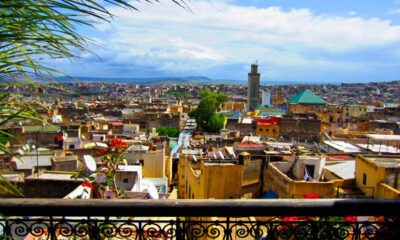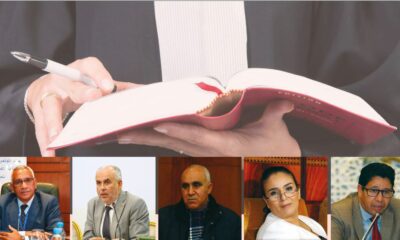Influences
Mocro Maffia: Between a Dreamed Life and a Very Real Nightmare
In Germany, Belgium, and the Netherlands, gangs largely composed of young Moroccans are often associated with urban violence and drug trafficking. These groups attract young people seeking recognition and a luxurious life, but the reality of their daily lives is much more complex.

« Belonging to a gang gives a person status: you suddenly become someone, you have a fixed social identity, you feel solidarity, and others respect or even fear you » , explains Professor Dirk Baier, director of the Institute for Delinquency and Crime Prevention at the Zurich University of Applied Sciences.
This sense of belonging is crucial for these young people, often marginalized and seeking recognition. In Germany, for example, where «more than half of young Moroccans leave school without qualifications or with low-level qualifications» ,this marginalization is particularly marked.
Joining a gang not only allows them to acquire this desired status but also to afford material goods they could not otherwise obtain. As Mahmoud Jaraba, a researcher at the Center for Studies on Islam and Law in Europe, points out, « members often benefit from luxuries they could not otherwise afford: expensive cars, designer clothes, and a lifestyle that evokes power and success».
The promise of this golden life attracts many young people into the nets of criminal organizations, pushing them to participate in increasingly dangerous illegal activities.
The Price to Pay: Instability and Violence
But this dream life comes at a cost. «The criminal environment is unstable, and gang members live in situations of constant risk, whether related to rival gangs, law enforcement, or internal conflicts» Jaraba indicates.
Violence is an integral part of this daily life: theft, drug trafficking, but also « plofkraken » – these ATM bombings – which have become sadly famous in North Rhine-Westphalia, Germany.
Gangs violently dispute territory and control of criminal markets, and clashes between rival clans are frequent, reinforcing the instability of this lifestyle. « Their activities range from drug trafficking (notably cocaine) to extortion, money laundering, and violent crimes such as shootings, kidnappings, and murders ».
What is called the Mocro Maffia is particularly involved in cocaine trafficking, a lucrative but extremely dangerous market. In Belgium, for example, the city of Antwerp has become a nerve center for cocaine trafficking, and young people claiming to be part of the Mocro Maffia play a key role there.
These gangs do not hesitate to use force to enforce their internal rules, going so far as to execute members who would have betrayed the group’s loyalty. And it’s not just talk: Nabil Amzieb is a young gang member whose death made headlines in the Netherlands.
In 2016, after deciding to cooperate with the police, Amzieb was brutally murdered. His body was found decapitated in a burning car in Amsterdam, and his head was placed in front of a «shisha lounge» in an act of intimidation intended to send a message to other gang members and potential witnesses.
And this is just one example among many. «This lifestyle is generally precarious», Jaraba reveals. «Violent confrontations are frequent when gangs dispute territory, markets, or power. At the same time, the constant risk of being arrested adds additional tension to their daily lives ».
A Difficult Trap to Escape in a High-Risk Universe
Leaving this world is almost impossible. « Leaving a gang is not only difficult, but also dangerous » Jaraba explains. «Disloyalty or attempts to leave result in violent repercussions ». Young people who dare to consider a life outside the gang expose themselves to reprisals that can go as far as execution.
Initiatives exist to help these repentant individuals, but successes are rare. The specialist mentions protection programs set up to ensure the safety of former gang members, but « very few successes have been reported ».
The pressure exerted by the group is such that even when some wish to get out, they are held back by fear of reprisals. This loyalty imposed by force and fear turns every attempt at escape into a perilous mission. The story of these young people is often written in two stages: a dream of wealth and power, followed by a nightmare of violence and psychological imprisonment.
The Fleeting Dream of Young Moroccans in Gangs
The Mocro Maffia, with its appearance of a golden life, represents a mirage for many young people from marginalized backgrounds. The gang offers them a sense of belonging, status, and material wealth. But behind this dream lies a much darker reality: an unstable existence marked by violence, fear, and precariousness.
And on top of that, they are not welcome anywhere, as Abdessamad Bouabid, associate professor of criminology at the University of Rotterdam, explains: «These groups of young people often come into conflict with local residents due to their disturbances and criminal behavior in marginalized neighborhoods».
Finally, the Mocro Maffia, with its deceptive promises of success, locks these young people into an endless cycle where attempting to leave the gang seems to be the greatest challenge. Those who have tried to escape often pay a high price, proving that life within these gangs, far from being a dream, is often a nightmare.













